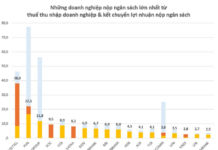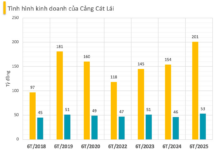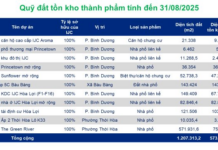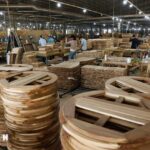According to preliminary statistics from the General Department of Customs, as of the end of August this year, Vietnam’s exports of wood and wood products reached a remarkable $10.4 billion, signifying a robust 22.6% increase compared to the same period last year.
Notably, in addition to primary items such as wooden furniture and wooden-framed chairs, exports of wood chips and wood pellets have garnered nearly $2 billion in just the first seven months of 2024.
Specifically, exports of wood chips surpassed $1.5 billion, marking a significant 28% jump from the previous year. Consequently, wood chips have emerged as the third-highest export earner in the forestry industry, only trailing behind wooden furniture and wooden-framed chairs.
Wood pellets, on the other hand, attained export turnover of $422.5 million, reflecting an 11.2% increase compared to the corresponding period last year.

Exports of wood chips and wood pellets reached nearly $2 billion in the first seven months of 2024. Illustrative image: Kim Truong Phuc |
At a recent press briefing held by the Ministry of Agriculture and Rural Development (MARD) on solutions to restore agricultural production following Storm No. 3, Deputy Minister of MARD Phung Duc Tien shared that the storm had wreaked havoc on vast areas of forests in several northern provinces, resulting in considerable damage.
Preliminary assessments indicate that Lang Son province endured approximately 2,000 hectares of damaged forest land due to Storm No. 3, while Bac Giang province faced losses across 5,100 hectares. Additionally, forests in Hai Phong, Ninh Binh, and other provinces also sustained damage, albeit to a lesser extent.
Deputy Minister Phung Duc Tien emphasized that wood chips and wood pellets are currently in high demand in the market. Therefore, the forestry industry should guide local authorities and forest owners whose forests have been affected by the storm to assess the situation and determine appropriate measures.
“For areas of forest that cannot be restored, immediate harvesting and replanting should be undertaken. Broken trees and branches should be collected and utilized for producing wood chips and wood pellets to help minimize losses for locals,” he stressed.
To address and mitigate the damage inflicted on forest areas by natural disasters, the Department of Forestry (under MARD) has requested the Departments of Agriculture and Rural Development of the northern mountainous and midland provinces and the Red River Delta region to facilitate the processing and harvesting of damaged forests.
Regarding forests owned by individuals or organizations, the decision to harvest and utilize the damaged forests rests with the owners, who are also responsible for replanting the forests in the subsequent suitable season.
For state-owned production forests and protective forests that are plantations, assessments should be conducted to evaluate the extent of damage and estimate the value of salvageable timber.
In cases where the damage is extensive, with trees completely uprooted or the remaining trees failing to meet the criteria for a forest (damage exceeding 70%), complete harvesting and salvage of timber should be carried out. Subsequently, the owners are responsible for replanting the forests in the next suitable season.
For forests with minor damage, where the remaining trees still meet the criteria for a forest, only the uprooted or broken trees should be salvaged.
The procedures for harvesting, utilizing, and salvaging timber from damaged forests are governed by Circular No. 26 and Circular No. 22 issued by MARD.
The Department of Forestry has instructed local authorities to guide and supervise the immediate harvesting and utilization of fallen trees when weather conditions permit. Additionally, they are urged to facilitate local purchasing and processing entities to ensure the complete procurement of this timber.
Tam An
“Positive Growth, Wood Industry Seizes Opportunity to Conquer $15.2 Billion Target”
The road to achieving the timber and forest product export target of $15.2 billion by 2024 will be challenging, according to experts. They believe that the industry will face numerous obstacles and require a concerted effort from businesses within the sector to overcome these hurdles.
The Art of Tax Exemption: Crafting a Financial Haven for Agricultural Endeavors
The Ministry of Finance has finalized a proposal to the Government on the development of a draft resolution by the National Assembly on exempting agricultural land tax.













































